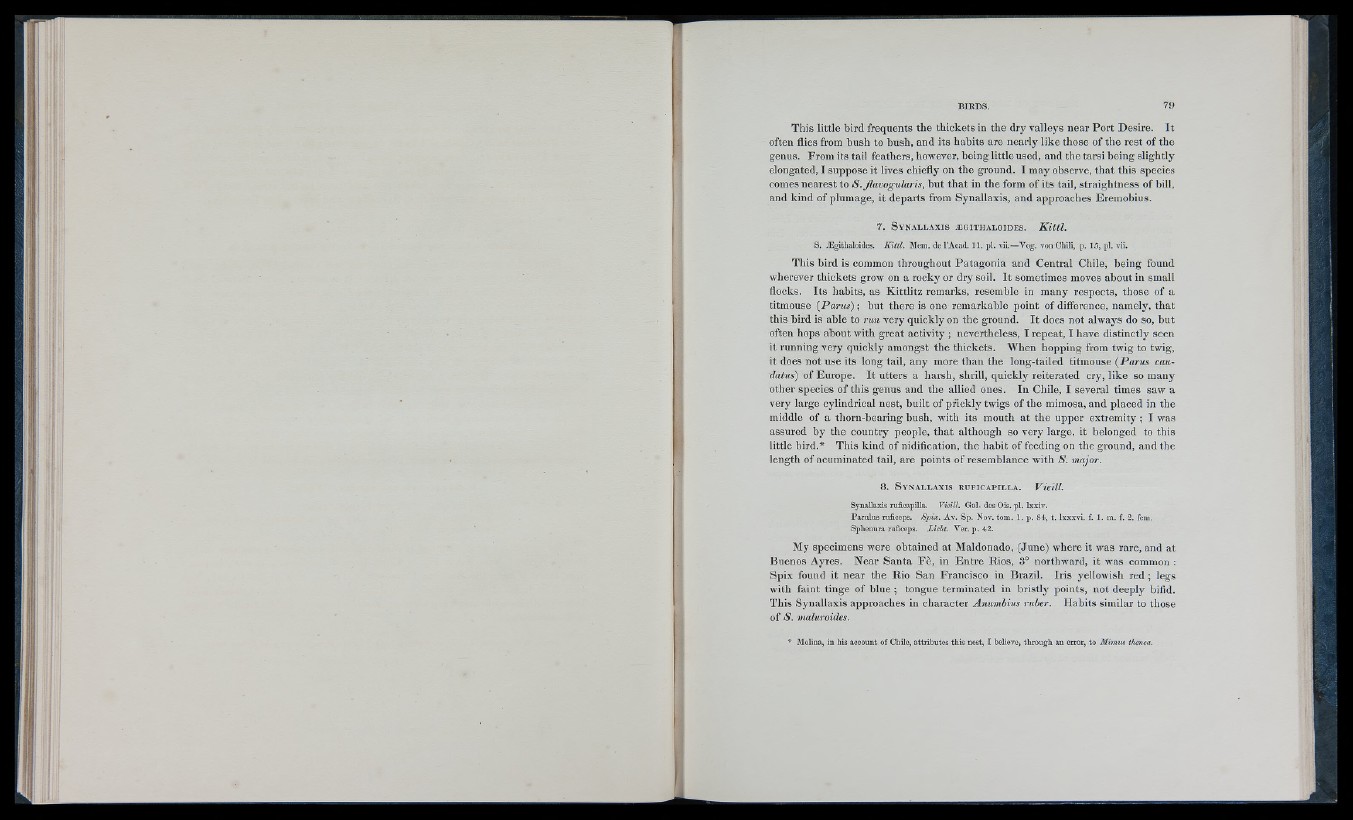
This little bird frequents the thickets in the dry valleys near Port Desire. It
often flies from bush to bush, and its habits are nearly like those of the rest of the
genus. From its tail feathers, however, being little used, and the tarsi being slightly
elongated, I suppose it lives chiefly on the ground. I may observe, that this species
comes nearest to S. flavogularis, but that in the form of its tail, straightness of bill,
and kind of plumage, it departs from Synallaxis, and approaches Eremobius.
7 . S y n a l l a x is a ig it h a l o id e s . K ittl.
S. iEgithaloides. K ittl. Mem. de I’Acad. 11. pi. vu.—Vog. von Chili, p. 15, pi. vii.
This bird is common throughout Patagonia and Central Chile, being found
wherever thickets grow on a rocky or dry soil. It sometimes moves about in small
flocks. Its habits, as Kittlitz remarks, resemble in many respects, those of a
titmouse (P aru s); but there is one remarkable point of difference, namely, that
this bird is able to run very quickly on the ground. It does not always do so, but
often hops about with great activity ; nevertheless, I repeat, I have distinctly seen
it running very quickly amongst the thickets. When hopping from twig to twig,
it does not use its long tail, any more than the long-tailed titmouse (Parus cau-
datus) of Europe. It utters a harsh, shrill, quickly reiterated cry, like so many
other species of this genus and the allied ones. In Chile, I several times saw a
very large cylindrical nest, built of prickly twigs of the mimosa, and placed in the
middle of a thorn-bearing bush, with its mouth at the upper extremity ; I was
assured by the country people, that although so very large, it belonged to this
little bird.* This kind of nidification, the habit of feeding on the ground, and the
length of acuminated tail, are points of resemblance with S. major.
8. S y n a l l a x is r u f ic a p i l l a . Vieill.
Synallaxis ruficapiUa. Vieill. Gal. des Ois. pi. Ixxiv.
Parnlus ruficeps. Spix. Av. Sp. Nov. tom. 1. p. 84, t. Ixxxvi. f. 1. m. f. 2. fem.
Splienura ruficeps. Licht. Ver. p. 42.
My specimens were obtained at Maldonado, (June) where it was rare, and at
Buenos Ayres. Near Santa F^, in Entre Rios, 3° northward, it was common :
Spix found it near the Rio San Francisco in Brazil. Iris yellowish red ; legs
with faint tinge of blue ; tongue terminated in bristly points, not deeply bifid.
This Synallaxis approaches in character Anumbius ruber. Habits similar to those
of S. maluroides.
* Molina, in his account of Chile, attributes this nest, I believe, through an error, to Mim m thmca.